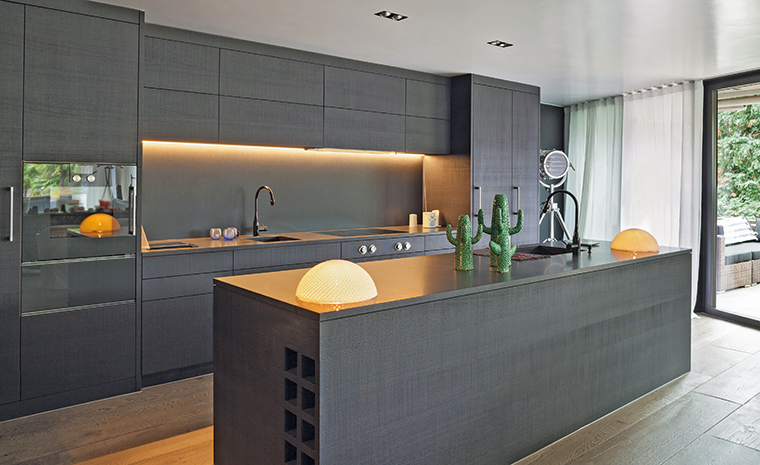Kenyon Group has specialised in edgebanding adhesives based on EVA, PO and PUR technologies for 40 years. Over this time, the company has seen many changes – not only with adhesive technologies, but also with materials and application methods. So how can a business decide which adhesive is right for them?
Hot-melt adhesives are used for bonding solid wood, aluminium, veneer, melamine, polyester, HPL, PVC, ABS and PP edgings of various thickness to core boards.
EVA hot melt adhesives are based on Ethyl-Vinyl Acetate (EVA), PO hot-melt adhesives are based on Polyolefin, and PUR hot-melt adhesives are based on polyurethane reactive technology.
Edgebanding using EVA hot melt is commonly used due to ease of use, but PUR is gaining ground rapidly, thanks to its exceptional benefits. If joints need to be water or heat resistant (fire doors or kitchen cabinets) then PUR adhesive is recommended, as it has a significantly higher water and heat resistance than an EVA adhesive.

Polyolefin-based adhesives for edgebanding applications have better hydrolysis and heat resistance than EVA-based adhesives. They are easier to apply than PUR adhesives, and also lower the risk of strings forming at the application unit, whilst providing better stability in the melting equipment in comparison with standard EVA-based adhesives.
According to Kenyon Group, PUR-based adhesives will always outperform EVA or PO adhesives. EVA hot-melt adhesives are classed as filled and unfilled adhesives. Filled glues are generally lower cost, and in addition to the adhesive resins, contain fillers such as chalk, which can, at low speeds, help prevent stringing.

Unfilled hot-melt adhesives can be applied thinner to give a tighter joint, offer high glue mileage and high final bond strength. When using PUR-based adhesives, chemical cross-linking is achieved within a few days. However, it is important that the bonded materials are stored above 15°C for full cure to take place – under 15°C, and the curing process is stalled.
Are PUR adhesive easy to use? In a nutshell, yes – with care, states Kenyon Group. With PUR hot-melt adhesives, the user can achieve a thinner glue line, high final bond strength and produce tight joints, at the same time as having excellent heat and water resistance, and all while running clean.
Not all edgebanders are equipped to run PUR adhesives (always check with the machine supplier for suitability). What is very important when using PUR adhesives is to purge the adhesive melt tank and applicator (nozzle/roller) after use with a suitable cleaning agent – unlike EVA adhesives, PUR adhesives, once cured, will not re-melt.
This year has seen a major push toward PUR MicroEmissions, which offer the proven bonding performance of traditional PUR adhesives with reduced health and safety concerns. PUR MicroE-missions (ME) contain less than 0.1% isocyanate monomer and reduce isocyanate vapours by up to -90%.
0161 627 1001
www.kenyon-group.co.uk








